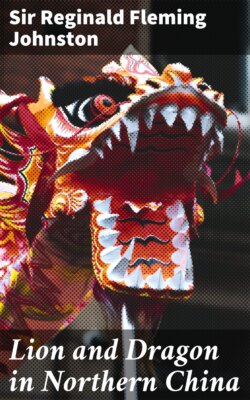Читать книгу Lion and Dragon in Northern China - Sir Reginald Fleming Johnston - Страница 10
На сайте Литреса книга снята с продажи.
FOOTNOTES:
ОглавлениеTable of Contents
[20] A writer in the Historians' History of the World, published by The Times (see vol. xxiv. p. 683), says of the Chinese, that "up to the advent of Europeans in the sixteenth century A.D. their records are untrustworthy." This is an erroneous and most extraordinary statement. The Chinese possessed valuable and, on the whole, reliable records centuries before a single one of the modern States of Europe had begun even to furnish material for history, far less produce trustworthy historical records of its own.
[21] This story is related in that ancient book of marvels the Shan Hai Ching ("Hill and Sea Classic"). The princess is there said to have been the daughter of the mythical Emperor Shên-nung (twenty-eighth century B.C.). As a ching wei, the princess is said to have had a white bill and red claws and to have been in appearance something like a crow.
[22] See Legge's Chinese Classics, vol. iii. pt. 1. pp. 18 and 102–3.
[23] Ten was a sort of mystic number with the ancient Chinese. Lao Tzŭ, the "Old Philosopher," for instance, is supposed to have had ten lines on each hand and ten toes on each foot.
[24] These superstitions, which are treated seriously in the Shan Hai Ching, are referred to in the Lun Hêng of Wang Ch'ung, a writer of the first century A.D. Wang Ch'ung decided that the ten suns could not have been real suns, for if they had been in a Hot Water Abyss they would have been extinguished, because water puts out fire; and if they had climbed a tree their heat would have scorched the branches! (See Forke's transl. of Lun Hêng, Luzac & Co: 1907, pp. 271 seq.)
[25] See Legge's Chinese Classics, vol. iii. pt. 1. pp. 18–23.
[26] Ibid., vol. iii. pt. 1. pp. 162 seq.
[27] The Shan Hai Ching mentions an island in the Wên-têng district, off the south-east coast, called Su-mên-tao, which still bears that name; and describes it as jih yüeh so ch'u—"the place where the sun and moon rise." This part of the ocean, though not the island itself, is visible from the sandy strip mentioned in the text.
[28] See the T'ai Ping Huan Yü Chi (chüan 20).
[29] The offensive appellation is preserved to this day in the name of a small island 120 li south-west of the Shantung Promontory, known as Dwarfs' Island. The term is still frequently used by the people, and it often occurred in formal petitions addressed to my own Court until I expressly forbade, under penalty, its further use.
[30] T'ai P'ing Huan Yü Chi, 174th chüan, pp. 3 seq.
[31] See pp. 12 seq.
[32] For notices concerning the ch'ien-hu and pai-hu of the tribes of far-western China at the present day, see the author's From Peking to Mandalay (John Murray: 1908), pp. 172, 176, 190, 425–7, 429.
[33] See p. 31.
[34] See p. 25.
[35] See pp. 14, 98.
[36] See p. 98.
[37] This is a village in British territory near Ai-shan Miao, a temple described on pp. 385–6.
[38] See p. 1.
